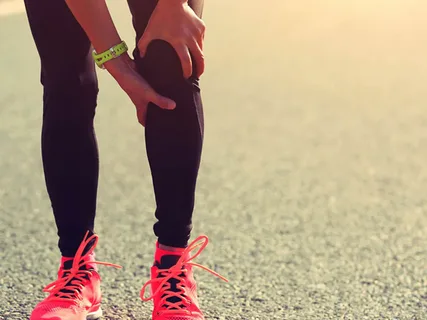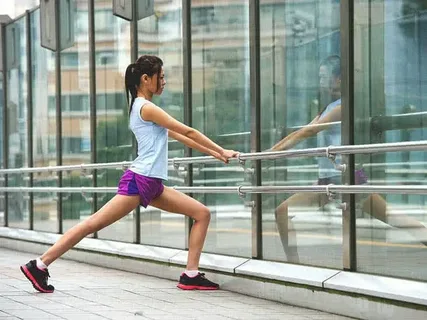Are you struggling with bone spur discomfort? You’re not alone. Bone spurs are a common problem for many people, but the good news is that best shoes for bone spurs to reduce and alleviate the discomfort associated with this condition. In this blog post, we’ll explore some of the best shoe designs that can help you walk easily and with support, even with challenging foot conditions. Say goodbye to your bone spur pain – it’s time to start finding the perfect shoe for you!
What Are Bone Spurs And How Do They Cause Pain?
Bone spurs, or osteophytes, are bony projections that develop on the edges of bones. They typically form in response to the constant rubbing or stress on the bones and can occur in any part of the body. When it comes to bone spurs in the feet, they often develop in the joints or where ligaments and tendons attach to the bones.
Bone spurs themselves do not typically cause pain. However, they can become problematic when they start to press on nerves or other tissues, leading to discomfort and inflammation. This can result in symptoms such as pain, swelling, tenderness, and limited mobility.
The exact cause of bone spur formation is not fully understood. However, there are certain factors that can increase the likelihood of developing them, including aging, osteoarthritis, repetitive stress, poor posture, and abnormal foot mechanics.
In the case of foot bone spurs, wearing ill-fitting or unsupportive shoes can exacerbate the pain. Shoes that do not provide adequate cushioning or proper arch support can put additional stress on the feet, leading to increased discomfort.
Understanding the causes of bone spur pain is essential for finding the right shoes to alleviate discomfort. In the next section, we will explore common footwear mistakes that can aggravate bone spur discomfort and how to avoid them.
Common Footwear Mistakes That Aggravate Bone Spur Discomfort
When it comes to bone spur discomfort, your choice of footwear can either alleviate or aggravate the pain. Unfortunately, there are common footwear mistakes that many people make, unknowingly worsening their condition. It’s important to avoid these mistakes and opt for shoes that provide the necessary support and cushioning to relieve bone spur discomfort.
One common mistake is wearing shoes with inadequate cushioning. When you have bone spurs, choosing shoes with ample cushioning to absorb shock and reduce pressure on your feet is crucial. Thin-soled shoes or those with minimal padding can exacerbate the discomfort, as they fail to absorb shock.
Another mistake is wearing shoes with improper arch support. If your shoes lack proper arch support, your feet can experience increased strain, leading to more pain and discomfort from bone spurs. Look for shoes with built-in arch support, or consider using orthotic inserts to support your feet.
Wearing ill-fitting shoes is also a common mistake that can worsen bone spur discomfort. Too tight shoes can squeeze and irritate the bone spurs, causing increased pain. On the other hand, shoes that are too loose can lead to friction and rubbing, exacerbating inflammation and discomfort. Choosing shoes that fit properly and provide enough room for your feet to move comfortably is essential.
Lastly, avoid high heels and shoes with narrow-toe boxes. High heels put excessive pressure on the front of your feet, aggravating bone spurs. Similarly, narrow toe boxes can compress and squeeze your toes, causing additional discomfort. Opt for shoes with a low heel and a roomy toe box to provide maximum foot comfort and support.
By avoiding these common footwear mistakes, you can alleviate the discomfort associated with bone spurs and find much-needed relief. Keep reading to discover what to look for in shoes that help relieve bone spur pain.
What to Look For In Shoes That Help Relieve Bone Spur Pain?
When finding shoes that help relieve bone spur pain, there are several key factors to consider. First and foremost, look for shoes with ample cushioning. The right amount of cushioning will help absorb shock and reduce pressure on your feet, providing much-needed relief from discomfort. Thick, padded soles are your best bet in this case.
Next, pay attention to the arch support provided by the shoes. Proper arch support is crucial for individuals with bone spurs as it helps alleviate strain on the feet. Look for shoes with built-in arch support, or use orthotic inserts for added support.
Furthermore, it’s important to choose shoes that fit properly. Too tight shoes can squeeze and irritate bone spurs, causing increased pain. On the other hand, shoes that are too loose can lead to friction and rubbing, exacerbating inflammation and discomfort. Find shoes that offer a snug yet comfortable fit to ensure optimal support.
Lastly, consider the heel height and toe box of the shoes. High heels put excessive pressure on the front of your feet, worsening bone spur discomfort. Opt for shoes with a low heel or none at all. Additionally, narrow toe boxes can compress and squeeze your toes, causing discomfort. Look for shoes with a roomy toe box to provide maximum comfort and support.
By considering these factors and choosing shoes that prioritize cushioning, arch support, proper fit, and the right heel and toe box, you can find the perfect pair of shoes to help relieve bone spur pain and allow you to walk with ease and comfort.
Designs of the best shoes for bone spurs
When it comes to finding the best shoes for bone spurs for alleviating pain, there are several options that can provide the comfort and support you need. One popular choice is shoes with cushioned soles. Look for shoes with thick, padded soles to absorb shock and reduce pressure on your feet. These shoes provide excellent cushioning, allowing you to walk easily and minimizing discomfort caused by bone spurs.
Another great option is shoes with built-in arch support. Proper arch support is essential for individuals with bone spurs as it helps alleviate foot strain. Look for shoes that have a supportive arch, or consider using orthotic inserts to provide the necessary support for your feet.
Additionally, shoes with a snug yet comfortable fit can also help relieve bone spur pain. Opt for shoes that are neither too tight nor too loose, ensuring optimal support without squeezing or irritating the bone spurs.
Finally, consider shoes with a low heel or none at all. High heels put excessive pressure on the front of your feet, worsening bone spur discomfort. By choosing shoes with a low heel or none at all, you can reduce the strain on your feet and alleviate pain.
Other Helpful Features For People With Bone Spurs
Finding the right shoes to alleviate bone spur discomfort goes beyond cushioning and arch support. There are other helpful features to consider that can further enhance your comfort and reduce pain.
One important feature to look for is a shoe with a wide-toe box. This allows your toes to spread naturally, relieving pressure on the bone spurs and reducing discomfort. A wide toe box can also accommodate any inflammation or swelling that may occur due to the bone spurs.
Another helpful feature is a shoe with a removable insole. This allows you to customize the fit and support of the shoe by adding orthotic inserts or other specialized insoles. You can choose the level of cushioning and support that works best for you and provides the most relief from bone spur pain.
Furthermore, consider shoes with lightweight and flexible construction. These types of shoes allow for natural foot movement and minimize strain on the feet. Lightweight materials also reduce the overall weight on your feet, which can help alleviate discomfort.
Lastly, shoes with a breathable upper can benefit people with bone spurs. Breathable materials allow for better airflow and ventilation, keeping your feet cool and dry. This can help prevent excessive sweating and reduce the risk of developing blisters or other skin irritations.
By considering these additional features, you can find shoes that provide the necessary cushioning and support, enhance your overall comfort, and help alleviate bone spur pain.
Tips for Choosing the Right Shoes to Relieve Bone Spur Pain
When it comes to choosing the right shoes to relieve bone spur pain, there are a few important tips to keep in mind. First and foremost, prioritize comfort. Look for shoes that feel good on your feet from the moment you try them on. Pay attention to any discomfort or pressure areas and ensure the shoes alleviate these issues.
Secondly, consider the level of cushioning and support provided by the shoes. Look for shoes with ample padding and shock absorption to help reduce the impact on your feet. Additionally, shoes with proper arch support can alleviate foot strain and relieve bone spur discomfort.
Another tip is to find shoes that fit properly. Ill-fitting shoes can exacerbate bone spur pain, so choosing shoes that are the right size and shape for your feet is important. Consider the width, length, and toe box room to ensure a comfortable fit.
Additionally, take into account any specific features that may be beneficial for your individual needs. This could include a wide toe box for spreading toes, a removable insole for customization, or a lightweight and flexible construction for natural foot movement.
FAQs
1. Can wearing the wrong shoes worsen bone spur discomfort?
Absolutely! Shoes not providing proper cushioning, arch support, or a comfortable fit can worsen bone spur discomfort. Thin-soled shoes or those with minimal padding fail to absorb shock, increasing pressure on the feet. Shoes without proper arch support can strain the feet further. Ill-fitting shoes, whether too tight or too loose, can squeeze or irritate bone spurs, causing more pain. Choosing shoes that prioritize cushioning, arch support, and proper fit is essential to alleviate bone spur discomfort.
2. Are there specific features of the best shoes for bone spurs that can help relieve pain?
Yes, specific shoe features can help relieve bone spur pain. Look for shoes with ample cushioning to absorb shock and reduce pressure on your feet. Shoes with built-in arch support or orthotic inserts can provide the necessary support to alleviate strain. Opt for shoes with a wide toe box to allow your toes to spread naturally and relieve pressure on bone spurs. A removable insole allows you to customize the fit and support. Additionally, lightweight and flexible shoes minimize strain on the feet, and breathable materials keep your feet cool and dry.
3. How can I choose shoes to relieve bone spur pain?
In your search for the best shoes to relieve bone spur pain, consider specific features that can enhance your comfort. A wide toe box allows your toes to spread naturally, reducing pressure on the bone spurs. A removable insole allows for customization of fit and support. Lightweight and flexible construction minimizes strain on the feet, and breathable materials keep your feet cool and dry.
Final Thoughts on Alleviating Bone Spur Pain with Proper Footwear
When it comes to alleviating bone spur pain, choosing the right footwear is crucial. The right shoes can make all the difference in providing comfort, support, and relief from discomfort. By prioritizing cushioning, arch support, proper fit, and other helpful features, you can find the perfect pair of shoes to help you walk with ease and comfort. Remember to avoid common footwear mistakes that can aggravate bone spur discomfort. Thin-soled shoes with minimal padding, improper arch support, and ill-fitting shoes can worsen the pain and inflammation associated with bone spurs. Instead, opt for shoes with thick, padded soles, built-in arch support, and a comfortable fit that doesn’t squeeze or irritate the bone spurs.
| Other Good Articles to Read |
| Skank Blogs |
| Unreal Blogs |
| Tba Blogs |
| All City Forums |
| Dany Blogs |
| Refuge Blogs |
| The Music Blogs |
| Key Forums |
| The Big Blog Theory |
| Joe Blogs |
| Blogs 4 Me |
| Blogs Emon |



